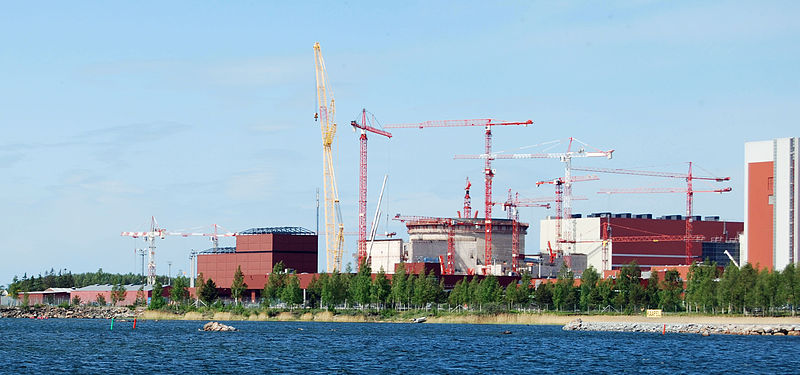The nonresidential building market was hamstrung by weather-related delays during the first part of the 2014, but conditions improved dramatically throughout the rest of the year to finish with greater than anticipated spending levels. The commercial construction sector is now looking at double-digit increases in 2015, led by vigorous levels of demand for hotels and office buildings.
The American Institute of Architects’ (AIA) semi-annual Consensus Construction Forecast, a survey of the nation’s leading construction forecasters, is projecting that spending will see a 7.7% increase in 2015, with next year’s projection nudging up to 8.2%.
VIDEO: Q1 2015 Economic Forecast
“This is the first time since the Great Recession that every major building category is projected to see increases in spending,” said AIA Chief Economist, Kermit Baker, PhD, Hon. AIA. “But by far, the most significant driver that will fuel greater expansion in the marketplace is the revival in the institutional sector, especially with growing demand for new healthcare and education facilities, which alone traditionally account for a third of spending on new building construction.”
Baker continued, “The overall construction industry appears to be on very solid ground for the next two years. That said, uncertainties in international economies, potential labor shortages, lower energy costs, rising interest rates and construction costs all are factors that we will be watching closely to see how they may adversely impact the marketplace.”
Market Segment Consensus Growth Forecasts
Overall nonresidential building
2015: 7.7%
2016: 8.2%
Commercial/industrial
2015: 11.8%
2016: 10.4%
Hotels
2015: 15.3%
2016: 10.4%
Office buildings
2015: 12.9%
2016: 11.5%
Industrial facilities
2015: 10.5%
2016: 10.1%
Retail
2015: 10.1%
2016: 9.0%
Institutional
2015: 5.0%
2016: 5.4%
Amusement/recreation
2015: 9.1%
2016: 5.3%
Education
2015: 4.7%
2016: 5.2%
Healthcare facilities
2015: 4.7%
2016: 6.2%
Public safety
2015: 1.7%
2016: 3.6%
Religious
2015: 1.2%
2016: 3.6%
About the AIA Consensus Construction Forecast Panel
The AIA Consensus Construction Forecast Panel is conducted twice a year with the leading nonresidential construction forecasters in the United States including, McGraw Hill Construction, Wells Fargo Securities, IHS-Global Insight, Moody’s economy.com, Reed Business Information, Associated Builders & Contractors and FMI. The purpose of the Consensus Construction Forecast Panel is to project business conditions in the construction industry over the coming 12 to 18 months. The Consensus Construction Forecast Panel has been conducted for 16 years.
Related Stories
Building Team | Oct 11, 2022
Associated Materials® Celebrates the Company’s Rich History, Which Began 75 Years Ago with the Founding of Alside
Since its inception in 1947, Alside® has been a leader in innovation and continues this very commitment to excellence – in people, products and services.
Multifamily Housing | Oct 5, 2022
Co-living spaces, wellness-minded designs among innovations in multifamily housing
The booming multifamily sector shows no signs of a significant slowdown heading into 2023. Here is a round up of Giants 400 firms that are driving innovation in this sector.
Fire and Life Safety | Oct 4, 2022
Fire safety considerations for cantilevered buildings
Bold cantilevered designs are prevalent today, as developers and architects strive to maximize space, views, and natural light in buildings. Cantilevered structures, however, present a host of challenges for building teams, according to José R. Rivera, PE, Associate Principal and Director of Plumbing and Fire Protection with Lilker.
| Oct 3, 2022
The College of the Holy Cross completes a $110 million performing arts center
In Worcester, Mass., a one-hour drive from Boston, the College of the Holy Cross has completed its $110 million Prior Performing Arts Center.
Resiliency | Sep 30, 2022
Designing buildings for wildfire defensibility
Wold Architects and Engineers' Senior Planner Ryan Downs, AIA, talks about how to make structures and communities more fire-resistant.
| Sep 23, 2022
High projected demand for new housing prompts debate on best climate-friendly materials
The number of people living in cities could increase to 80% of the total population by 2100. That could require more new construction between now and 2050 than all the construction done since the start of the industrial revolution.
| Sep 23, 2022
Central offices making a comeback after pandemic
In the early stages of the Covid pandemic, commercial real estate industry experts predicted that businesses would increasingly move toward a hub-and-spoke office model.
| Sep 22, 2022
Gainesville, Fla., ordinance requires Home Energy Score during rental inspections
The city of Gainesville, Florida was recently recognized by the U.S. Dept. of Energy for an adopted ordinance that requires rental housing to receive a Home Energy Score during rental inspections.
| Sep 20, 2022
NIBS develops implementation plan for digital transformation of built environment
The National Institute of Building Sciences (NIBS) says it has developed an implementation and launch plan for a sweeping digital transformation of the built environment.
University Buildings | Aug 25, 2022
Higher education, striving for ‘normal’ again, puts student needs at the center of project planning
Sustainability and design flexibility are what higher education clients are seeking consistently, according to the dozen AEC Giants contacted for this article. “University campuses across North America are commissioning new construction projects designed to make existing buildings and energy systems more sustainable, and are building new flexible learning space that bridge the gap between remote and in-person learning,” say Patrick McCafferty, Arup’s Education Business Leader–Americas East region, and Matt Humphries, Education Business Leader in Canada region.

















